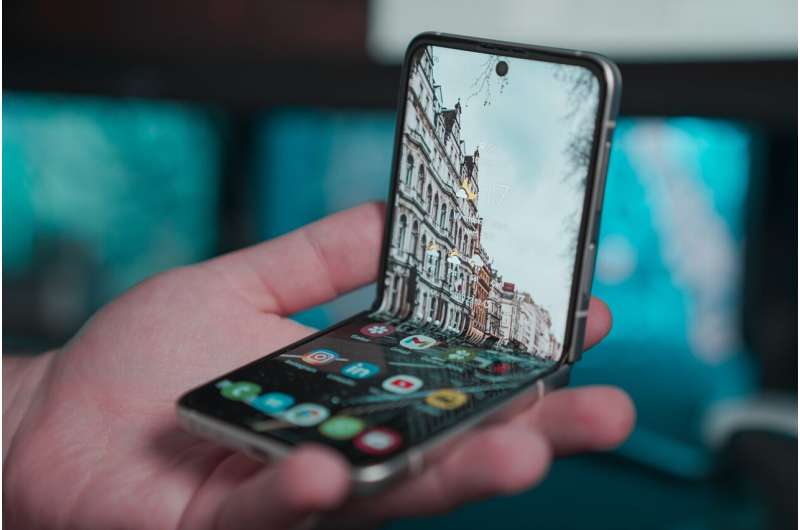This article has been reviewed according to Science X's editorial process and policies. Editors have highlighted the following attributes while ensuring the content's credibility:
fact-checked
peer-reviewed publication
trusted source
proofread
Informed by mechanics and computation, flexible bioelectronics can better conform to a curvy body

Today, foldable phones are ubiquitous. Now, using models that predict how well a flexible electronic device will conform to spherical surfaces, University of Wisconsin–Madison and University of Texas at Austin engineers could usher in a new era in which these bendy devices can integrate seamlessly with parts of the human body.
In the future, for example, a flexible bioelectronic artificial retina implanted in a person's eyeball could help restore vision, or a smart contact lens could continuously sense glucose levels in the body.
"With our powerful simulation model, we can now predict the conformability immediately, which dramatically speeds up the design process for flexible electronics," says Ying Li, an associate professor of mechanical engineering at UW–Madison, whose research group developed the computational models. "The simulation results give very clear guidance for experimentalists, who can now determine the optimal design without needing to do a lot of extremely time-consuming experiments."
The researchers detailed their work in a paper published April 19, 2023, in the journal Science Advances.
To perform as expected, bioelectronic devices must make very close contact with living tissue and avoid buckling or creasing. However, researchers have struggled to get flexible electronics to fully conform to so-called "non-developable surfaces"—surfaces such as spheres that can't be flattened without breaking or creasing—which are all over the human body.
In this study, the research team used a combination of experimental, analytical and numerical approaches to systematically investigate how circular polymer sheets (which mimic the mechanical properties of flexible electronics), as well as partially cut circular sheets, conform on spherical surfaces. Analyzing those results enabled the researchers to derive a ready-to-use formula that reveals the underlying physics and predicts the conformability of flexible electronics.
"The results from our three different methods all pointed to the same physics, which is exciting," says Nanshu Lu, a professor in the Department of Aerospace Engineering and Engineering Mechanics at the University of Texas at Austin, who led the experimental research. "We formulated a very simple mathematical equation to guide the design of flexible electronics for maximum conformability, and this should have a significant impact in the field."
In addition, the researchers demonstrated a simple and elegant method for greatly enhancing the ability of flexible sheets to conform on spherical surfaces. Inspired by the Japanese art of kirigami, in which paper is cut and folded, the researchers made the simplest possible radial cuts in the circular sheet, improving its conformability from 40% to more than 90%.
Li says this advance will drive innovation in the field by enabling many other researchers to design improved flexible electronics.
"This is the first work to provide a full picture to understand the complex process of how flexible electronics conform to these complicated surfaces," Li says. "This advance will pave the way for all the future studies in the area of developing bioelectronics that can better conform to the human body."
More information: Siyi Liu et al, Conformability of flexible sheets on spherical surfaces, Science Advances (2023). DOI: 10.1126/sciadv.adf2709. www.science.org/doi/10.1126/sciadv.adf2709





















